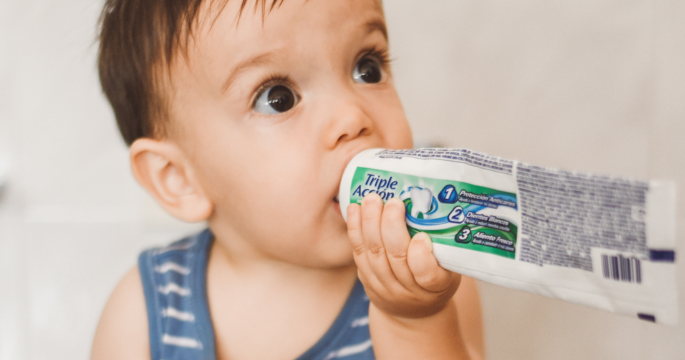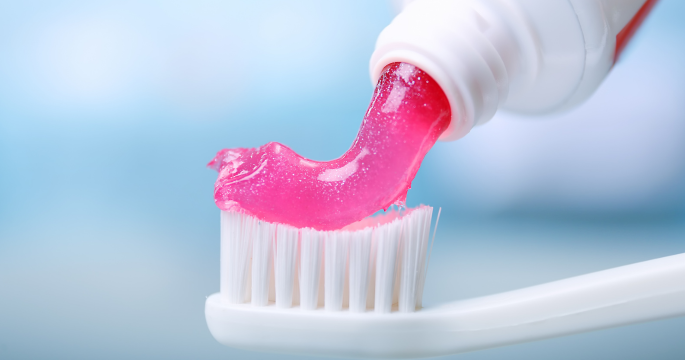1- Titanium oxide
It is the additive which gives its color "whiteer than white" to to the toothpaste, it is found in the diet under the name of E171 or CI 77891.
In Europe, since 2022, this ingredient has been prohibited in food additives because of its carcinogenic potential for lungs and intestines.
Moreover, an "acting for the environment" survey counted 408 toothpaste (including 59 intended for children, and 25 organic certified) containing titanium dioxide (source: TF1).
Obviously, we cite it in number 1 of the ingredients to avoid, the risk of ingestion of toothpaste being far too large in children.
2- Summary Conservatives
To properly preserve toothpaste, the cosmetic industry often adds benzoate E221 sodium (conservative of which we have already talked well in This item)
To summarize, its use in cosmetics is regulated and limited:
2.5 % in rinse products (shower gels, shampoos, etc.)
1.7 % in oral products (toothpaste, mouthwash, etc.)
0.5 % in non -rinsed products (creams and moisturizing milks, etc.)
Only, sodium benzoate is also used in sodas, prepared dishes, drugs: we find them everywhere.
Although its use is limited in each of these areas, by combining these products in your daily life, you take the risk of undergoing the cocktail effect and exposing your child to an overdose.
Benzoate sodium overdose is dangerous for children because of its neurotoxic activity, suspected of being linked to the hyperactivity of children (1).
3- Aggressive surfactant (sulfate)
Sulfates are a family of surfactants, the best known of which are sodium lauryl sulfate (SLS) which are considered to be irritating agents. (if you want to know more read This item)
For information, a product containing 2 % SLS can burn the fragile skin of a child.
For several years, more than 16,000 scientific research has already demonstrated the misdeeds of sulfates. All the molecules of this family have the particularity of destroying the structure of skin proteins.
It’s like pouring acid on your skin, you don’t feel burning because our skin makes new proteins quickly. Only, in the long term, the effects can be terrible.
According to a German study, after 8 days of application of a solution dosed at 7.5 % of SLS on the skin of the candidates (20 minutes a day) the skin was literally chemically burned.
We consider that it is too dangerous to use it in an oral hygiene product ...
4- DOLUS
We have mentioned above the concern of white toothpaste, which contain titanium oxide (really not ideal ...)
But be aware that there are also other dyes, such as iron oxide to obtain a more pink/red color.
As its name suggests, the iron oxide comes from minerals, it therefore presents a risk of exposure to heavy metals, a risk which seems to us preventable especially if it is "only" for a color ...
From a more ludo-educational point of view, a child who will have learned to brush his teeth with pink toothpaste can be destabilized during the transition to a "large" toothpaste (colorless or bleached).
Small PS, an essential factor, when choosing a toothpaste, is also to check the fluorine dosage. We had already written An article on this subject.
I hope that our article can help you choose a good toothpaste for your children, do not hesitate to send us your questions about coucou@lilikiwi.fr
Source :




